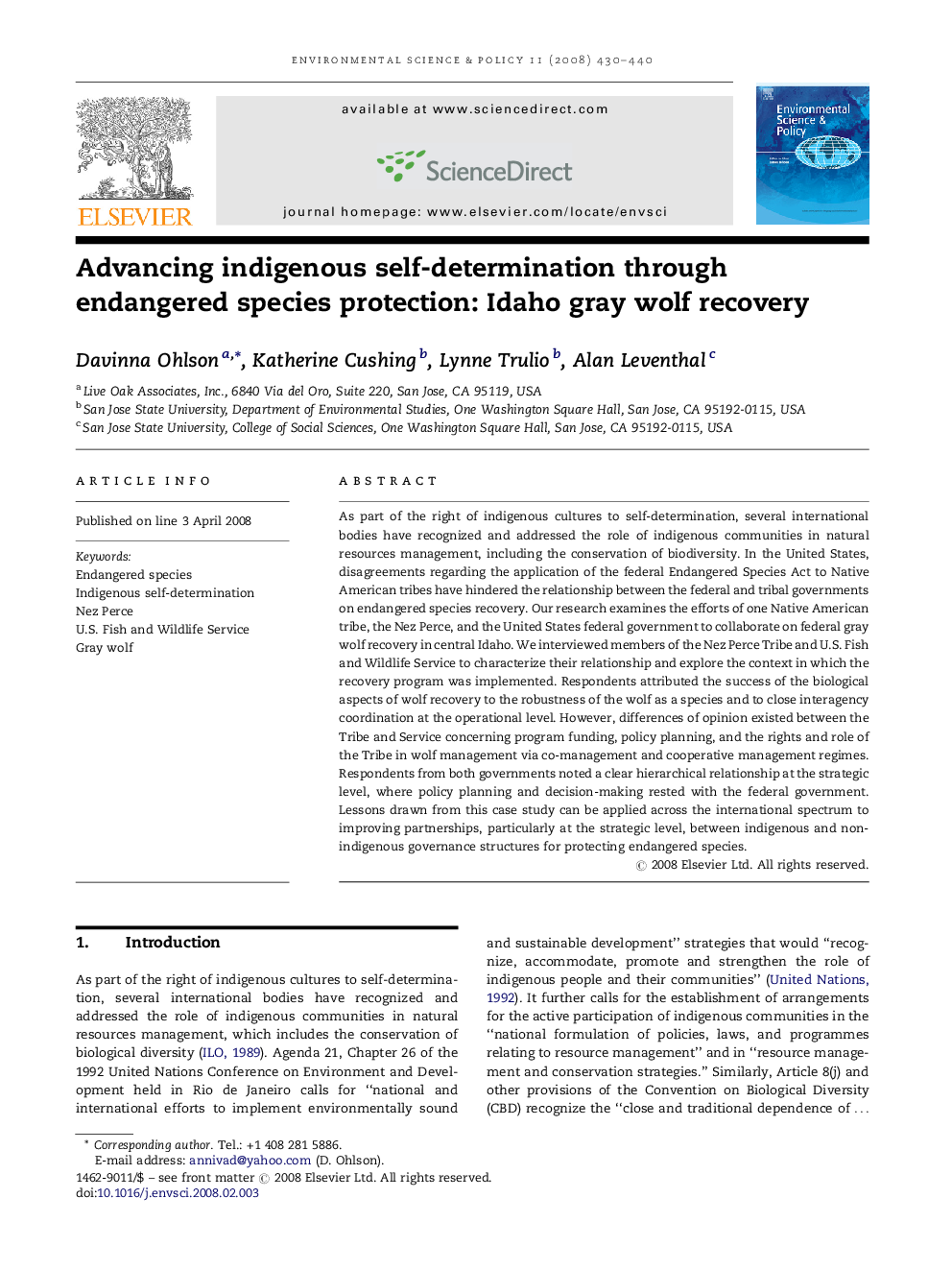| Article ID | Journal | Published Year | Pages | File Type |
|---|---|---|---|---|
| 1054149 | Environmental Science & Policy | 2008 | 11 Pages |
As part of the right of indigenous cultures to self-determination, several international bodies have recognized and addressed the role of indigenous communities in natural resources management, including the conservation of biodiversity. In the United States, disagreements regarding the application of the federal Endangered Species Act to Native American tribes have hindered the relationship between the federal and tribal governments on endangered species recovery. Our research examines the efforts of one Native American tribe, the Nez Perce, and the United States federal government to collaborate on federal gray wolf recovery in central Idaho. We interviewed members of the Nez Perce Tribe and U.S. Fish and Wildlife Service to characterize their relationship and explore the context in which the recovery program was implemented. Respondents attributed the success of the biological aspects of wolf recovery to the robustness of the wolf as a species and to close interagency coordination at the operational level. However, differences of opinion existed between the Tribe and Service concerning program funding, policy planning, and the rights and role of the Tribe in wolf management via co-management and cooperative management regimes. Respondents from both governments noted a clear hierarchical relationship at the strategic level, where policy planning and decision-making rested with the federal government. Lessons drawn from this case study can be applied across the international spectrum to improving partnerships, particularly at the strategic level, between indigenous and non-indigenous governance structures for protecting endangered species.
